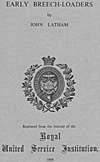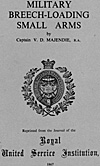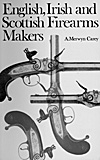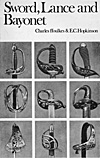These Tail Pieces continue to mark anniversaries. The month of October sees a triple where Arms & Armour Press is concerned. It was founded by me in October 1966, the sale took place in October 1984, and I departed (and the first Greenhill books were published) in October 1986.
Going back to 1966, the first Arms & Armour Press books were packed for despatch on the kitchen table in my parents' home, where I lived.
There were three distinct stages to the evolution of A&AP, each different in timespan but with significant differences in the development of the publishing house:
- working from home 1966–1969
- first offices in Child's Hill, North West London, 1969–1971
- offices in Hampstead High Street, 1971–1984
At the time that I left Paul Hamlyn to start Arms & Armour Press publishing houses were eponymous and publishing books of a general nature; there was no enterprise culture in British publishing in the mid-1960s and almost no new publishing houses being set up.
Hence I called the new business Arms & Armour Press because I did not want my own name upon it in case it either failed, or (preferably) I received a job offer. A plus factor however was that it neatly covered and advertised the subject area upon which I proposed to publish, and, over a period, as the publishing developed, this attracted attention, and made it the sympathetic name in the subject area. There have been few enough subject specific publishing houses, and there were none of such a nature at that time.
There were three people whom I knew from my Herbert Jenkins' days and with whom doing business established Arms & Armour Press. These were Ken Trotman, the specialist military bookseller, Milton Gladstone, an avuncular pirate of a publisher running Arco in New York, and Nat Wartels of Crown, New York. Plus I must mention Charles Letts, the very long established diary publishers, with whom I acted as a consultant on their getting into book publishing, which generated a positive personal cash flow.
The way into doing business without delay was to reissue needed books. I have noticed businesses get started and create overheads and then wait for new books to be written and published, which can build an edifice of debt. I didn't have that time, and had no money or financial backing, but was fortunate to be personally without commitments, and to live and be able to work from my parents' house in Edgware, Middlesex, on the edge of London's North Western suburbs. I set up a desk in my bedroom, and had a telephone line extension, my mother answering downstairs and then putting through telephone calls, sometimes international ones which were a rare occurrence in those days, to 'Mr Leventhal' – in my bedroom. Another time, inspectors from the Government's Export Credit Guarantee Department made a visit, and were slightly astonished to have to have a meeting in the dining room of a residential house in the suburbs with a new business which was exporting books to the United States.
 The first books to be reprinted were very modest, but were undertaken at the behest of Ken Trotman. They were reprints in stiff papercovers of 19th-century military source material, such as Military Breech-Loading Small Arms by V. D. Majendie (1868), and Early Breech-Loaders by John Latham (1867). The quantity being reprinted was only 300 copies, but Ken Trotman had guaranteed to take 100 of each and that sale funded the whole print run.
The first books to be reprinted were very modest, but were undertaken at the behest of Ken Trotman. They were reprints in stiff papercovers of 19th-century military source material, such as Military Breech-Loading Small Arms by V. D. Majendie (1868), and Early Breech-Loaders by John Latham (1867). The quantity being reprinted was only 300 copies, but Ken Trotman had guaranteed to take 100 of each and that sale funded the whole print run.
There are all sorts of comparisons that can be made between the enterprise culture that was created in the 1970s and subsequently took off in the 1980s, and the professionalism in business today. But back in the 1960s such a culture did not exist, there was no guidance or education, and if one realised just how much one didn't know one would not have commenced business. However the business world was also much simpler. It seemed to me to be a practical situation (whilst still looking for a job), that if one could sell sufficient books to pay the printer's bill and get the payment from the customer before the printer's bill was due for payment then everything would add up. It has always focused the mind wonderfully when the monies you are spending come from your own (possibly empty) pocket.

The first thing to do for the first publication was to research and locate a firm that could economically print a quantity as low as three hundred. As those were the days of folk music, I checked the shelves of some Charing Cross Road bookshops, and a few coffee shops, for the name of any firm which printed the short runs of folk music fanzines. I found a printer working from a shed by a creekside in Essex, and it was that printer who produced the first Arms & Armour Press books. I would pick the stock up from his shed and drive with them over to High Wycombe and deliver them, with the invoice, to Ken Trotman.
Parallel to this I started clearing copyrights on full-scale books which Ken Trotman said were wanted by the gun collectors. He however could not take more than a guaranteed one hundred out of the possible print run of between 1,500 and 2,500, needed in order to sell them at a realistic retail price. Hence using the contacts which I had made through visiting New York and selling co-editions for Herbert Jenkins I contacted Milton Gladstone and Nat Wartels.
 Both were happy to take co-editions of books such as English, Irish and Scottish Firearms Makers by A. Merwyn Carey, Sword, Lance and Bayonet by Charles ffoulkes, British Pistols and Guns by Ian Glendenning, etc. Nat Wartels took an especially large quantity of The Gun and its Development by W. W. Greener (8,000 copies for 12s. 7d. each, that's about 63.5 pence today, of this monster 852-page book. Maybe indeed it's now time for another reprinting.)
Both were happy to take co-editions of books such as English, Irish and Scottish Firearms Makers by A. Merwyn Carey, Sword, Lance and Bayonet by Charles ffoulkes, British Pistols and Guns by Ian Glendenning, etc. Nat Wartels took an especially large quantity of The Gun and its Development by W. W. Greener (8,000 copies for 12s. 7d. each, that's about 63.5 pence today, of this monster 852-page book. Maybe indeed it's now time for another reprinting.)
Milton was short, avuncular and cigar-chewing; an archetypal New York wheeler and dealer. He always claimed that Milo Mindbender who wheeled and dealed his way through World War II in the book Catch 22 was based on him, and it certainly reflected his way of doing business.

Nat Wartels had a unique office, and his desk was piled high with a mountain of papers three or four foot high. In fact as you went in to his office you could not see him at all, and had to go round the side of his desk. He, however, knew unerringly where every sheet of paper he needed was, and could reach into a higgledy piggledy heap and bring it out. He continued for many years his active publishing work, indeed his personal ownership of Crown, until he was well into his eighties. But then he sold the business, although he stayed on. But as these things happen, it just wasn't the same. The new owners cleared his desk, and it felt wrong seeing him across a gleaming, clear space.
These co-edition orders from American publishers, as with the low run reprints, enabled the printers' bills for the whole editions to be paid and, if my judgement was right, there would be profit from the sale of the remaining copies of the books which I had kept for Arms & Armour Press' own publication.
The first and modest facsimile publications came out as I was leaving Paul Hamlyn, in October 1966. There were eight more publications in 1967, three of them in hardback and which were sold on a co-edition basis to Arco. Ten more books followed in 1968, which is when I started working again with Stackpole Books, on a co-edition basis, with the Arms & Armour Press Illustrated Monographs.
 Whilst still working from home in 1968 there was, with the benefit of hindsight, one significant trendsetting publication: that of The Sherman by Peter Chamberlain and Chris Ellis. This was only a modest, illustrated paperback, but it led on to major works such as British and American Tanks of World War II by Peter Chamberlain and Chris Ellis, German Tanks of World War II by von Senger und Eterlin, Tanks of the World by Peter Chamberlain and Chris Ellis, Russian Tanks 1900-1970 by John Milsom. They were the first of a whole generation of 'nuts and bolts' books.
Whilst still working from home in 1968 there was, with the benefit of hindsight, one significant trendsetting publication: that of The Sherman by Peter Chamberlain and Chris Ellis. This was only a modest, illustrated paperback, but it led on to major works such as British and American Tanks of World War II by Peter Chamberlain and Chris Ellis, German Tanks of World War II by von Senger und Eterlin, Tanks of the World by Peter Chamberlain and Chris Ellis, Russian Tanks 1900-1970 by John Milsom. They were the first of a whole generation of 'nuts and bolts' books.
The publication of books for collectors led to our exhibiting at the newly established London Arms Fair, where we could sell the reprints of source works about firearms. At one Fair the purchaser of a costly, antique bayonet came over to the A&AP stand to check the book Bayonets by F. J. Stephens, in order to identify the specific model that he had just spent a lot of money upon. He found a photograph of his bayonet in the book, but then dithered about spending £1.50 on the book. He spent much time moaning about the high cost of books, especially when all he wanted was just the one page, that when he eventually, reluctantly, made up his mind to buy it I refused to sell him a copy. Fortunately a friend of his came over ten minutes later to buy the book for him; I needed every sale I could get.
The publication of the book Rapiers by Eric Valentine almost led to a dreadful embarrassment. Publishers often turn to experts for critical opinion of material that is being submitted to them, and this is a practice which I have always done starting at Arms & Armour Press and continuing to this day. In order to have the expert express a factual, critical opinion, the publisher must offer confidentiality (unless the expert says that his name can be revealed), because often the expert may have to work in some way, may even be a friend of, the author whose material is being submitted. In this particular case Eric Valentine was a wonderful, larger than life, ebullient Mancunian, who collected with great gusto, but his knowledge was not academically based. A. V. B. Norman, then Deputy Director of the Wallace Collection, was the great expert on the subject, with a wonderful dry wit, and he wrote a report which said that only the photographs of the swords from the book were of any value; the text was worthless. He called me and made me double-promise that his friend Eric would not know it was he who had given the opinion, and I agreed. I wrote two letters to both A. V. B. Norman and Eric Valentine, and it was only when I was on the way to the postbox that something made me pause, open one of the letters, and – yes – the letters had been switched in the envelopes. It certainly would have been hideously embarrassing to all concerned if the wrong letter had been sent to Eric Valentine.
The address used on the first Arms & Armour Press books was that of my home in Edgware, but this soon changed when Clive Bingley, then running his publishing business of professional books for librarians, undertook the trade distribution, and the address changed to his base in Pembridge Road, Notting Hill, until we moved into our first offices.
With the evolution and growth of the publishing it became necessary to have offices, and I decided to have them in North West London, convenient for a journey from my home but also for visitors from Central London. And, a major step for any new business, to take on an employee.
The story of Arms & Armour Press covers twenty years and some of my ventures in military publishing will have to be told in subsequent issues of Greenhill Military Book News.
Arms and Armour Press: The First Offices
Back to Greenhill Military Book News No. 102 Table of Contents
Back to Greenhill Military Book News List of Issues
Back to Master Magazine List
© Copyright 2000 by Greenhill Books
This article appears in MagWeb (Magazine Web) on the Internet World Wide Web.
Other military history articles and gaming articles are available at http://www.magweb.com